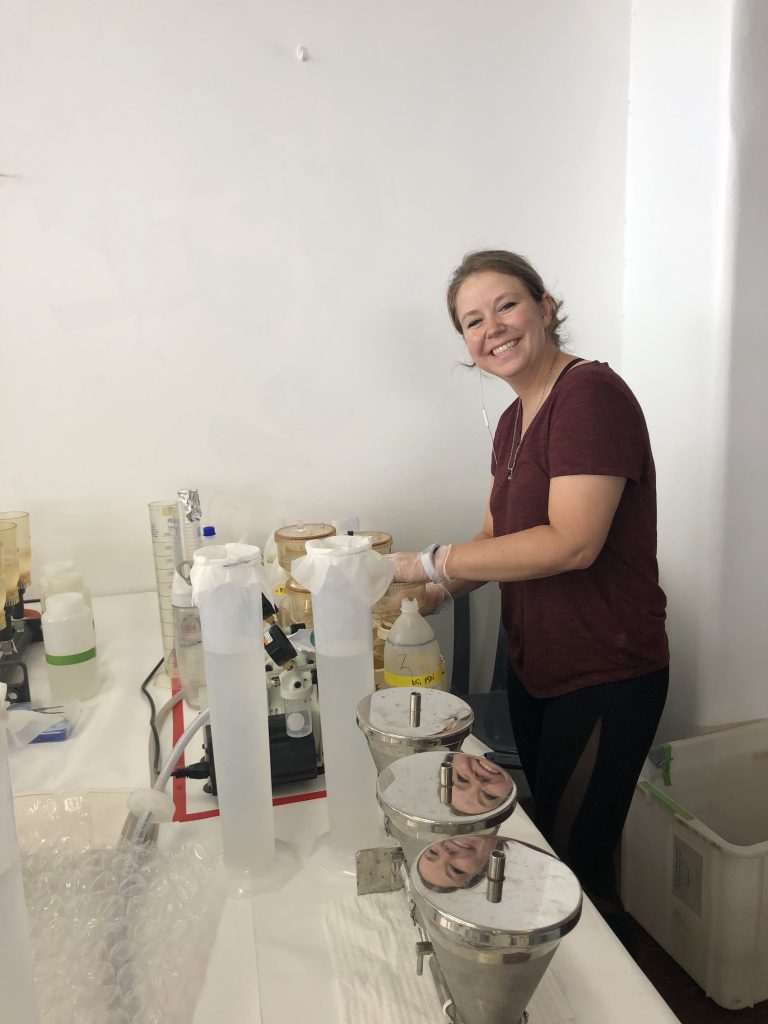I first heard about the CUSCO project when Dr. Mar Fernández-Méndez approached my advisor, Dr. Jeffrey Krause, about sending a member of his lab to participate. The project itself is investigating how changes in a certain physical process, upwelling, will affect the world’s most productive marine fishery off the coast of Peru. Upwelling, for those who are not familiar, is the movement of deep, nutrient rich water from the depths of the ocean to the surface where the nutrients can support the food web. At the bottom of the food web are tiny, microscopic plants known as phytoplankton. Of particular interest to me is a group of phytoplankton called diatoms, they are a key group for the efficient transfer of energy to other marine organisms on which the Peruvian anchovy feeds.

Unlike other phytoplankton groups, diatoms are unique because they use the element silicon to make ornate shells out of silica, or glass. In some cases, these shells are so strong that, if they were scaled to the size of a coffee table, they could hold the weight of an elephant (genus Coscinodiscus, if you would like to look them up)! Because other phytoplankton groups do not need silicon, its cycling can help us understand diatom-specific contributions to processes in this system. We add a silicon tracer as a dissolved nutrient into the water samples, and, after 24 hours, we look for the tracer in particles; this tell us how fast diatoms are growing. When comparing diatom growth to that of the entire phytoplankton community (led by Dr. Mar Fernández-Méndez), we can infer whether or not the phytoplankton may be efficiently supplying food to anchovy prey.

As a disclaimer, I am not primarily a silicon scientist. I mostly work in the stinky sulfur world, but I couldn’t pass on the opportunity to travel to Peru to participate in a large-scale project with such distinguished European colleagues. The design of the experiment is elegant, using mesocosms, or large bags suspended in the ocean, to provide somewhat easily manipulated, closed systems. We could modify the amount of upwelling by adding different volumes of deep water, changing the nutrient composition of the system. By measuring important variables, such as the growth of diatoms, we can see how changes in the physics of the system can in turn affect the biology. As there is still uncertainty in how global warming will change the physics of the earth as a whole, it is incredibly important to understand what the possible changes could mean.

Unfortunately, I was unable to personally stay in La Punta to finish sampling the water myself for these experiments due to the outbreak of Covid-19. However, other scientists have remained to keep the sampling going at a reduced volume. I am so thankful for their continued commitment to the project, and I am very excited to get those samples back to Alabama for analysis. I’ll keep you posted on the results!
Allie Smith